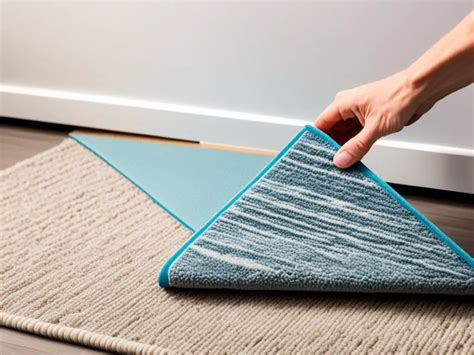Keep Rugs Flat: Proven Techniques to Conquer Curling Corners and Creases
A beautifully placed rug can instantly elevate a room's aesthetic. However, a wrinkled, curled-up rug can quickly undo all that hard work. Nobody wants to trip over a bunching rug or constantly be adjusting its edges. Fortunately, there are several proven techniques to keep your rugs flat and looking their best. This comprehensive guide will equip you with the knowledge and strategies to conquer those pesky curling corners and stubborn creases, no matter the rug material or size.
Why Do Rugs Curl and Buckle?
Before diving into solutions, it's helpful to understand why rugs misbehave. Several factors contribute to curling and buckling:
- Material: Natural fiber rugs (wool, jute, sisal) are more prone to curling than synthetic rugs due to their inherent characteristics and response to humidity.
- Manufacturing: Imperfect weaving or finishing can leave rugs with inherent tensions that lead to curling.
- Moisture: Changes in humidity can cause natural fiber rugs to expand or contract, leading to unevenness and curling.
- Improper Underlay: Lack of a proper rug pad or an unsuitable one can exacerbate curling, especially on hard floors.
- Movement: Foot traffic and shifting furniture can contribute to the rug's overall distortion.
Proven Techniques to Keep Rugs Flat
Now, let's explore the effective methods to address rug wrinkling and ensure a perfectly flat surface:
1. Using a Rug Pad: The Foundation for Flatness
A high-quality rug pad is arguably the most crucial element in keeping your rug flat. A good pad provides cushioning, prevents slippage, and distributes the rug's weight evenly, minimizing curling. Choose a pad designed for your rug type and floor material. Felt pads are excellent for hardwood floors, while rubber-backed pads work well on carpet. Ensure the pad is the same size or slightly smaller than your rug to avoid bunching.
2. Heavy Furniture Placement: Weight is Your Friend
Strategically placing heavy furniture on your rug can help flatten it over time. The weight of the furniture will gently press down on the rug, reducing curling, especially in high-traffic areas. However, be mindful not to over-concentrate weight in one spot which could damage the rug.
3. Steam Ironing (With Caution!): A Gentle Approach for Minor Wrinkles
For minor wrinkles or creases, a steam iron can be a helpful tool. However, this method should be used sparingly and with extreme caution. Never iron directly on the rug. Instead, hold the iron several inches above the rug and use the steam function to gently release wrinkles. Test on an inconspicuous area first to ensure the fabric and dyes are not damaged. This method is most suitable for synthetic rugs.
4. Reverse Rolling: Fighting Back Against Curl
This simple technique can effectively address curling edges. Carefully roll the rug tightly in the opposite direction of the curl. Secure it with rope or strong tape and leave it rolled for a few days. This process helps relax the fibers and reduce the curl. For particularly stubborn rugs, you might need to repeat this process.
5. The Weight-Down Method: A Patient Approach
For persistent curling, consider placing heavy objects (books, weights, etc.) directly on the curled areas. This method requires patience, as it can take several days or even weeks for the rug to completely flatten. This is best for smaller areas of curling.
6. Professional Rug Cleaning and Stretching: The Expert Touch
If all else fails, consider professional help. Rug cleaners often offer stretching and flattening services. They have the tools and expertise to address stubborn wrinkles and restore your rug to its original shape.
7. Addressing Specific Rug Materials: Tailored Solutions
Different rug materials require slightly different approaches. Natural fiber rugs, especially those made from wool or sisal, may require more patient and gentle methods. Synthetic rugs often respond better to steam and weight. Always check the care instructions provided with your rug.
What to Do About Rugs That Continue to Curl After Trying These Methods?
If you've tried multiple techniques and your rug still curls, consider these factors:
- Rug Pad Quality: A low-quality or improperly sized rug pad will likely fail to address the underlying issue.
- Underlying Floor Issues: An uneven floor may contribute to rug curling. Consider addressing floor imperfections before investing more time and effort in flattening the rug.
- Rug Age and Condition: Very old or damaged rugs may have fibers that have become permanently set.
By employing these proven techniques and understanding the underlying causes of rug curling, you can ensure your rugs remain flat, beautiful, and safe for years to come. Remember patience and persistence are key to achieving a perfectly flat rug!

